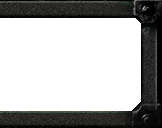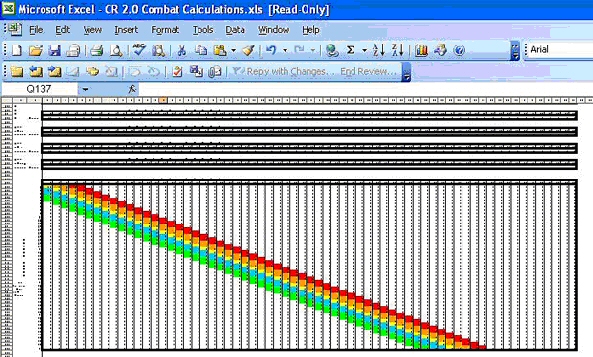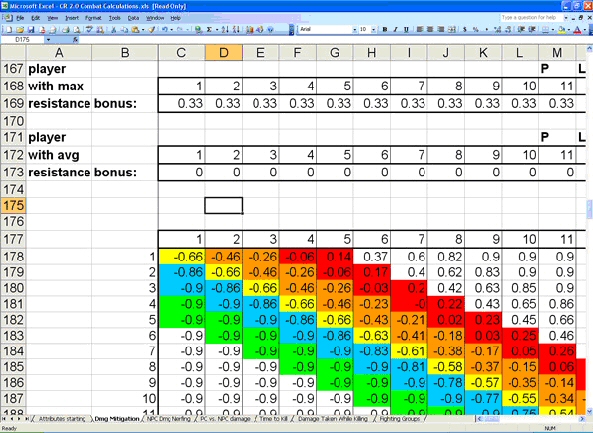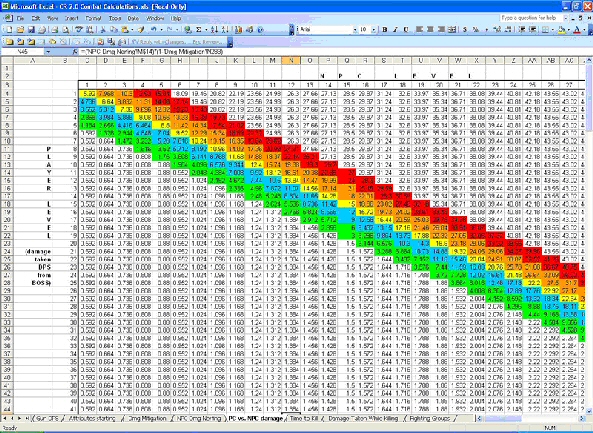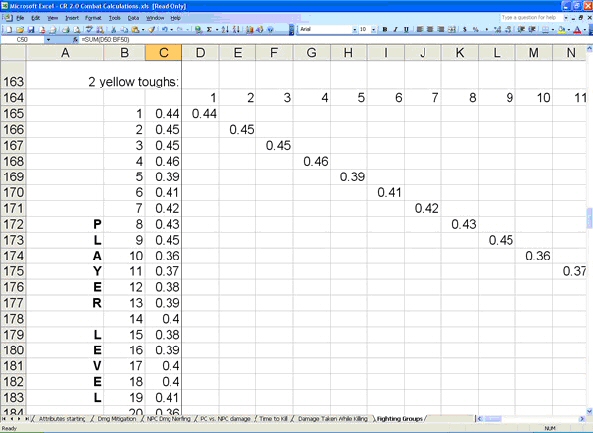PvE Balancing for Combat Revision 2.0
Or, How I Learned To Stop Worrying and Love CR 2
Step right up, ladies and gents, and see the mystifying process of balancing PvE for combat revision 2.0! See death-defying feats of aerial acrobatics, without a safety net! Watch as two green-conned weaklings demolish a hapless play tester! Shiver with fright as you confront the nightmarish reality of level-based damage mitigation!
One of the unique challenges with CR 2.0 came about because our engineers kick a little too much ass. In this case, they got the NPCs operating at a level they have never reached before. We all know that the one of the best parts of The Matrix Online is blasting your way through a pack of NPCs and leaving a trail of bodies in your wake.
Once CR2.0 was in a playable state, it was clear that the opposite was now happening. Anyone who tried running a mission or taking on some even-level mobs outside quickly understood that the balance was just not right.
Enter the Care Bear Stare.
This is a spreadsheet created for the sole purpose of balancing the CR 2.0 Player vs. Environment (PvE) experience. (Note: Originally named the "Rainbow Bright" spreadsheet for its cheerful color scheme, it was renamed by one "Walrus" after seeing the terrifying sigs adopted by the PvP masters from our non-hostile servers.) This spreadsheet allows a designer to input some key numbers, find a player's level on the left, and then scan to the right to find a color matching the in-game conning system. Bright shiny colors help Froggy design.
But wait; let's take a closer look, shall we? Those faint of heart or experiencing nerve-related medical conditions are advised to consult with a physician before proceeding. Rapidly turning your monitor on and off while viewing this image may cause your finger to get tired.
On the first page of the spreadsheet, we set up level-based damage mitigation. Some of our most important variables (we like to use the technical term "knobs") are kept on that page. Tweak the knobs, and changes cascade down through all six pages to the end.
The first page became very important as we realized that the initial design for damage resistance was simply not providing the necessary gameplay balance. Some changes to that first page allowed us to shift the whole focus of the damage mitigation system, from a clothing-based system to one that is based primarily on level difference, secondarily on clothing. This was vital in balancing out the conning system so that it would scale along with the player's level.
The second page manages NPC damage output, and compares it to player damage output. It also holds some values such as player hit points, boss/tough/weakling hit points, and other relevant data. There are several knobs on this page as well.
The third page (seen above) uses the first two pages (DPS cross-referenced with damage mitigation) to calculate, on average, how much actual DPS a player would both give and receive to various level NPCs, of varying degrees of difficulty (boss, tough, or weakling).
The fourth page calculates how many seconds it will take the player to kill a boss, tough, or weakling of any level, based upon the player's calculated DPS from the previous page cross referenced with the NPC's hit points.
The fifth page calculates how much damage the player will take from the specified NPC while the fight is going on, based upon the previous page (how long the fight lasts) and the page before (how much DPS the NPC will cause to the player.
The final page wraps this all together with a few sample scenarios, say, fighting two yellow-conned toughs:
The number output to the left shows what fraction of the player's hit points will be lost during the fight against the specified enemies.
Of course a mere spreadsheet such as this, based solely upon mathematical equations, cannot predict everything that will spring into our devious players' minds. Inevitably there are tweaks and adjustments as you, our glorious players, plunge into combat and bring us your reports. But this system does give us a fairly good idea of what numbers to plug in, and allows us to make a single change on any of the first few pages and see the results percolate through the rest of the sheet to the end, before we ever touch the actual code of the game.
In closing, I leave you with a shocking indication of why you should always label the cells you're working with. Please remain seated while viewing the following image. Make sure your pets are spayed or neutered. Thank you.
Editor's Note: This journal was brought to you courtesy of HCFrog, who goes to great lengths to understand the impact of balancing changes on the game. -Walrus
Discuss this article on Broadcast Depth.




















